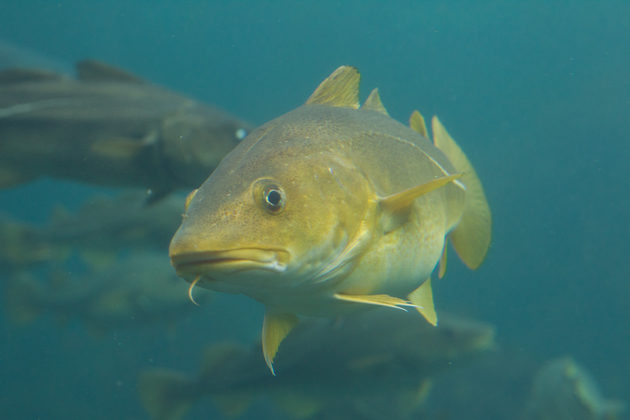Cod that eats pellets has the same quality as other wild fish

A short-term cod feeding trial suggests that the quality of wild fish around fish farms is not harmed through intake of salmon feed.
Every now and then, one comes across rather heated debates where both recreational and commercial fishermen are shocked at the amount of pellets that pour out of the stomachs of the fish they gut. It both looks and smells unappetizing, and many believe that these fish are not fit for human consumption.
But do we really know if this diet affects fish fillets?
Little knowledge about the problem
As part of the ‘Coexistence’ project, in which we acquire knowledge about how marine industries are able to positively coexist, scientists initially conducted a survey among Norwegians to find out what they think of so-called ‘pellet-coley’ – i.e. coley that eat feed around fish farms.
Most people did not know anything about this. Only men over the age of 60 from Northern Norway had an opinion on the issue – maybe because these are the people who have experienced catching pellet-coley. In a new survey, northern Norwegian fishermen said that especially the smell, texture and appearance of the fish are affected by a pellet diet.
Nothing wrong with fillet quality
In order to assess the quality, the scientists fed a small group of wild-caught cod with pellets over a period of five weeks before slaughter. They then assessed the fish using a modified quality index method (QIM), where the main focus was on smell, texture and appearance.
“We were unable to find many significant differences between wild fish that had eaten pellets and other wild fish”, says postdoctoral researcher Ragnhild Aven Svalheim.
“The fish had the same texture, smell and appearance as other fish, but the fillet gaping was different. Wild-caught fish fed with herring and prawns had more filet gaping than those that had eaten pellets, but those that had eaten pellets had more filet gaping than wild fish.”
The difference between the groups depended on how much food there was in the gastrointestinal system of the fish. The results suggest that it is not what the fish eats, but rather how much it eats that determines the quality.
